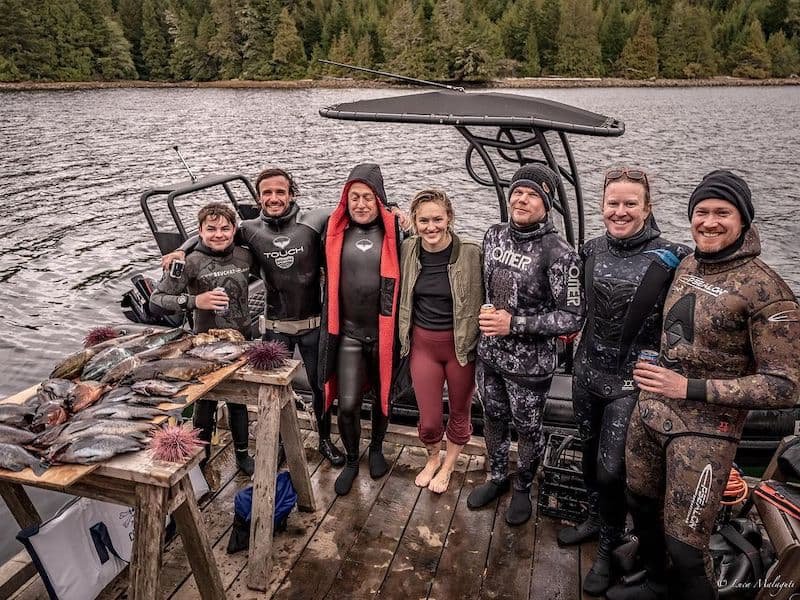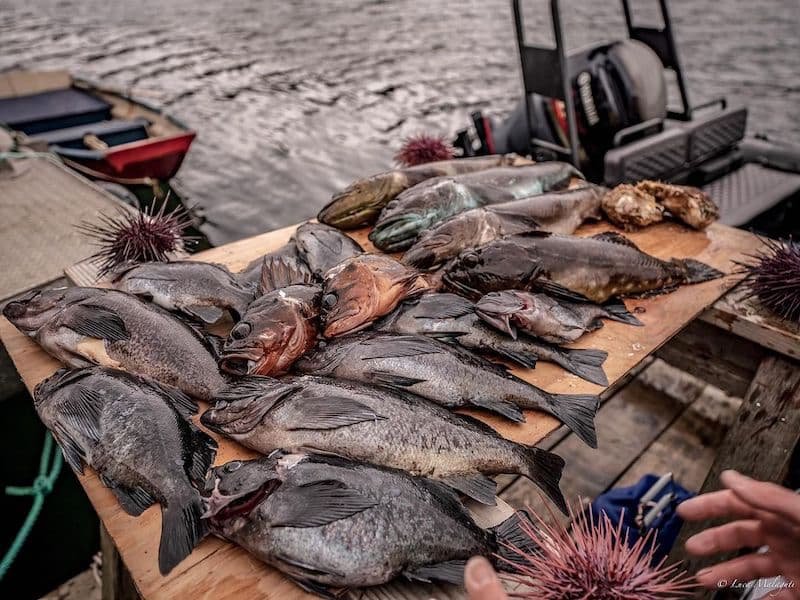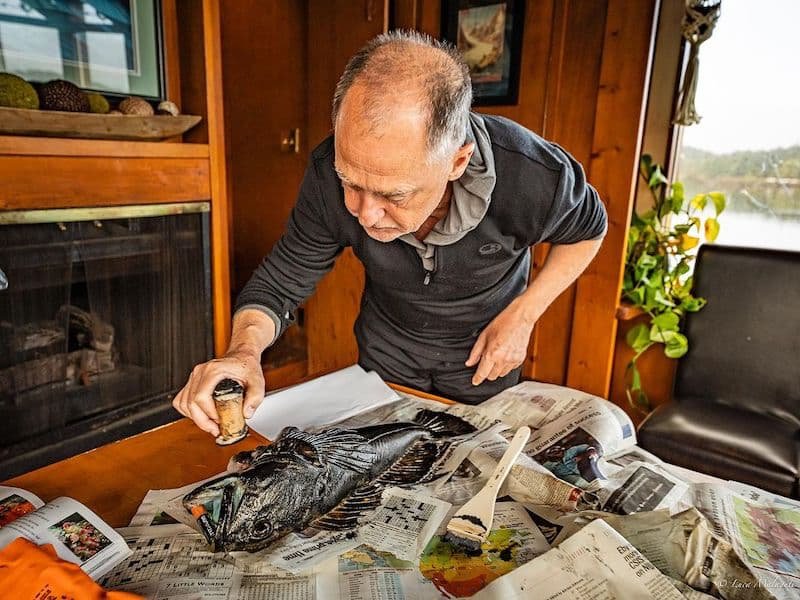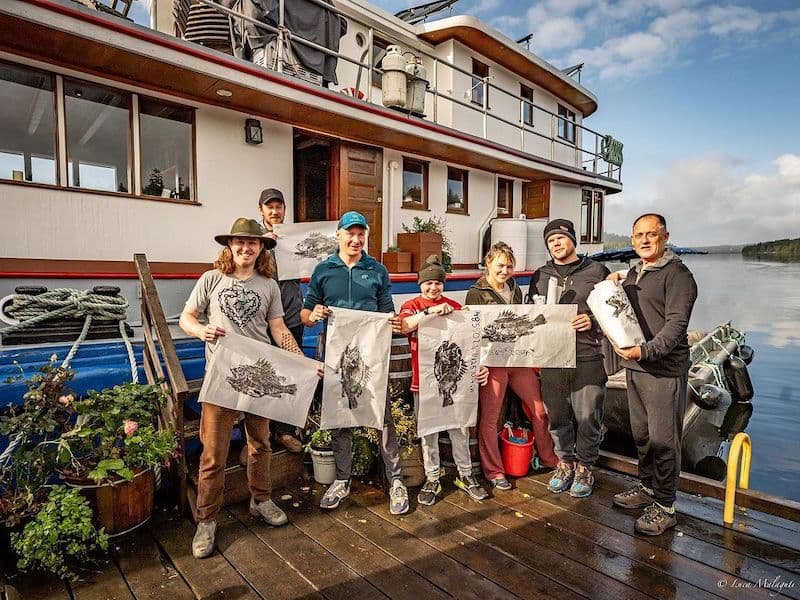
 Katie Wood
Freediver, Writer, Explorer
Katie Wood
Freediver, Writer, Explorer

 Katie Wood
Freediver, Writer, Explorer
Katie Wood
Freediver, Writer, Explorer
Gyotaku, the age-old Japanese art of fish printing, has deep cultural roots in Japan. This unique art form not only captures the essence of marine life but also serves as a timeless testament to the importance of nature and tradition. Let’s look into the fascinating world of Gyotaku art, exploring its historical significance in Japanese culture, its enduring appeal around the world, and its relevance for spearos who seek to transform their catches into lasting works of art.
Gyotaku, a word that literally means "fish rubbing," originated in Japan during the early 19th century. In a time before photography, Japanese fishermen found a creative way to document their impressive catches and celebrate their connection to the sea. What started as a practical method evolved into a sophisticated art form.
Gyotaku art encapsulates the Japanese cultural connection with nature and a deep respect for the environment. The act of carefully transferring the intricate details of a fish onto paper or fabric reflects the reverence Japanese people hold for marine life.

Photo by Luca Malaguti
To create a Gyotaku print, you need specific materials and tools. Traditional Gyotaku artists utilize ink, rice paper, and a brayer for inking the fish, as well as a variety of paints and brushes to add color and fine details. Understanding the materials is crucial for an authentic Gyotaku experience.
The process involves preparing a freshly caught fish by cleaning and gutting it. Ink or paint is then applied to one side of the fish. The fish is carefully placed onto a sheet of paper or fabric and gently pressed to transfer the ink or paint, capturing the intricate details of the fish. Additional features such as the eye and fins can be added by hand.
Gyotaku art allows for various styles and interpretations. Traditional black-and-white prints are common, but artists often add color to enhance the realism of their creations. Gyotaku artists may also experiment with different materials and textures to produce unique and captivating pieces.

Photo by Luca Malaguti
Historically, Gyotaku was employed by fishermen to commemorate their successes and record the size and type of fish they caught. These prints became a source of pride and a tangible memory of their time at sea. As Gyotaku evolved, it transcended its practical origins and became an art form celebrated for its aesthetic value. Artists began to focus on the details, striving to capture the beauty and essence of marine life in each print. This transformation marked the shift from documentation to artistic expression.
Gyotaku reflects the profound connection between the Japanese people and the natural world, particularly the sea. It embodies the principles of "shizen" (nature) and "wabi-sabi" (finding beauty in imperfection), both fundamental elements in Japanese culture.

Photo by Luca Malaguti
In recent years, Gyotaku has transcended cultural boundaries and gained international recognition. Artists around the world have embraced this traditional Japanese art form and incorporated their own unique cultural influences. Gyotaku has found a particularly strong following in the United States, where artists have embraced the technique and adapted it to local marine life. In states like Hawaii and Florida, Gyotaku workshops and galleries are popular, showcasing the diverse aquatic ecosystems and fish species of these regions. Gyotaku has also found its way to Europe, with artists capturing the essence of local fish and marine life. The art form has been embraced by both traditional artists and the wider creative community. The internet has played a crucial role in connecting Gyotaku artists from around the world. Online communities, forums, and social media have allowed artists to share their work, techniques, and stories, further promoting the art of Gyotaku.

Photo by Luca Malaguti
Spearfishing, the act of hunting fish underwater with a speargun or pole spear, is an exhilarating way to connect with the marine environment. For spearos, the underwater world is a captivating realm of adventure and beauty. Spearos often seek ways to commemorate their underwater hunts and the fish they catch. Gyotaku provides a perfect avenue for spearos to immortalize their catches in a way that reflects the essence and beauty of the underwater world.
Creating Gyotaku prints from spearfishing catches is more than a mere memento; it's an opportunity to express one's love for the sea and its inhabitants. These prints become personal works of art, preserving the memories of each hunt in a tangible and unique form.

Photo by Luca Malaguti
In an era where environmental conservation is of utmost importance, Gyotaku has the potential to serve as a medium for raising awareness about marine life and the challenges it faces. Gyotaku artists can use their work to highlight the beauty of endangered species and the importance of protecting their habitats. Preserving the tradition of Gyotaku is essential for maintaining its cultural significance. Encouraging new generations to learn and appreciate this art form is vital for its continued existence.